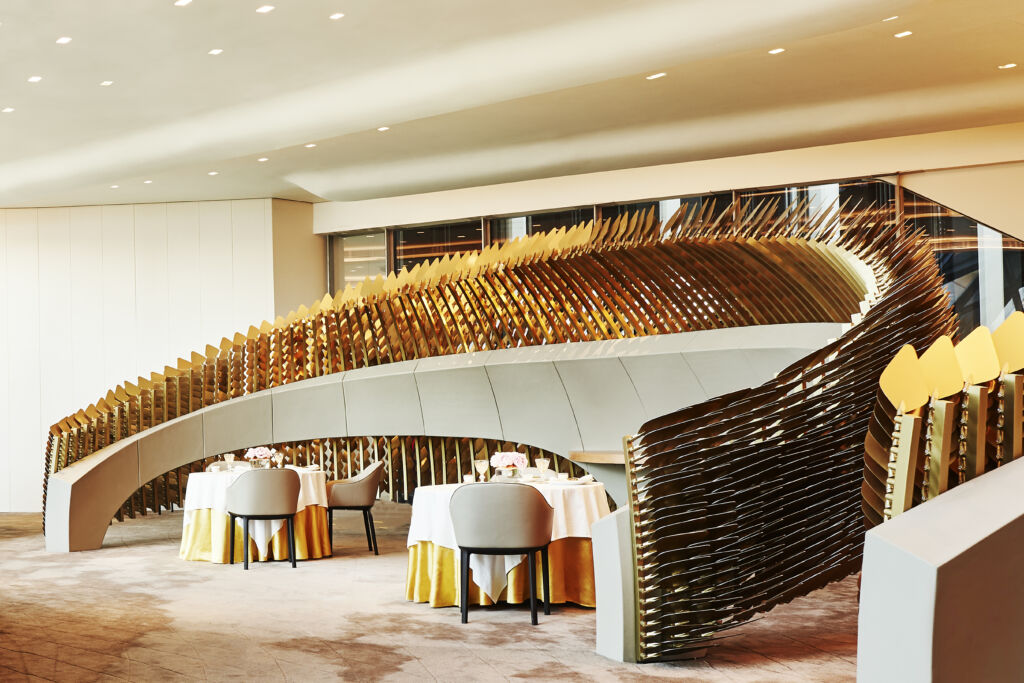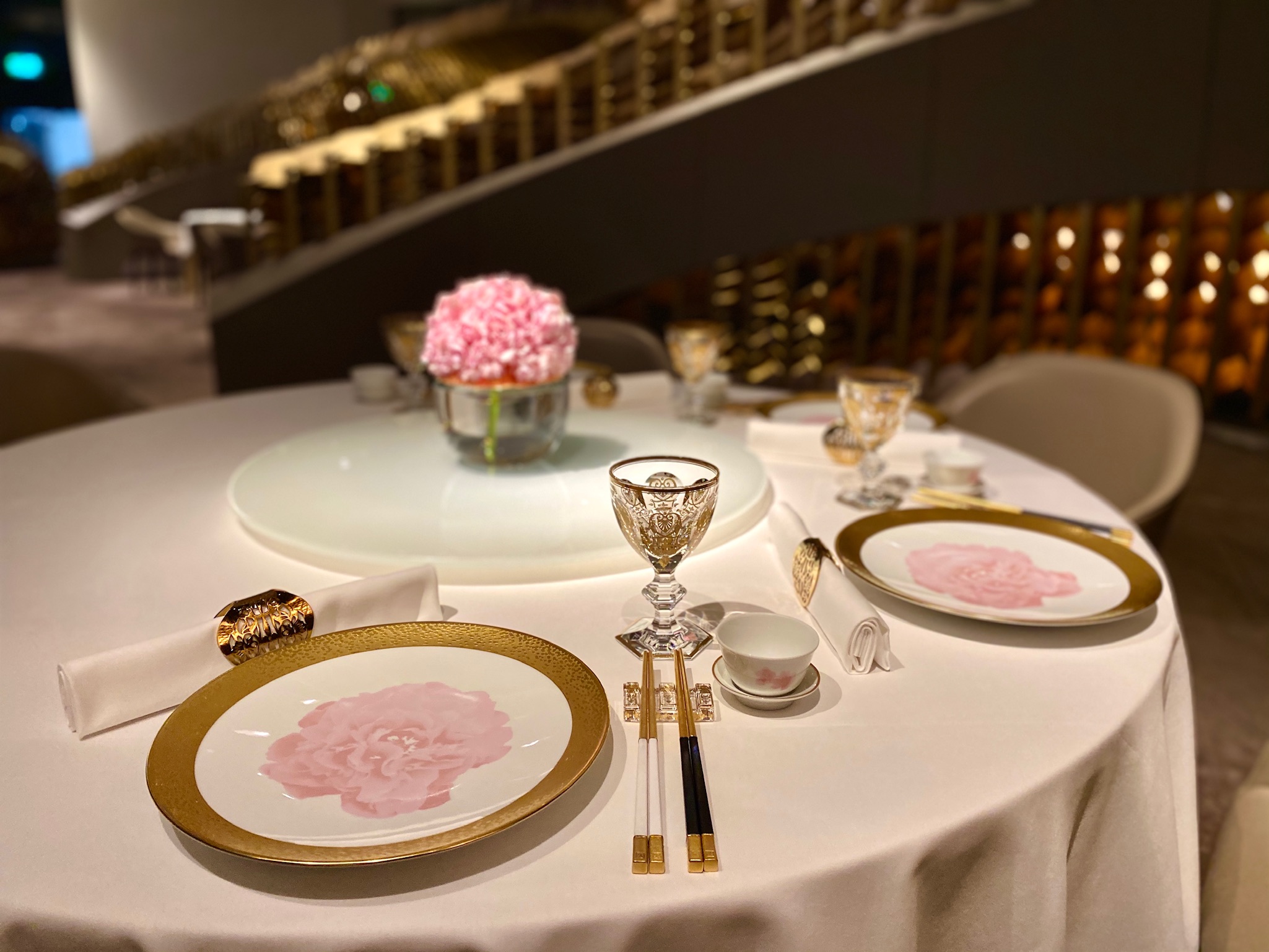Naturally, every restaurant aspires to be of the highest standard, strives to choose the best ingredients for their dishes, hire the most competent cooks, and provide excellent customer service. However, some establishments bring the dining affair to another level, serving their guests more than just a fine meal. One of these restaurants is Yí at Morpheus, where ancient wisdom meets outstanding culinary flair. Read on to learn what to expect when you dine there.
The home of resting dragons
It is safe to say that the experience at Yí does not start with the first appetizer or even the first glance at the menu. Followed by a ride in the futuristic Morpheus elevator, we arrived at the sky bridge on the 21st floor where Yí is nestled. Welcomed by a friendly hostess, we took a moment before heading to our table to admire Yí’s extraordinary, to say the least, interior. Also designed by Zaha Hadid Architects, Yí pays homage to Chinese traditions in a contemporary manner: nine golden semi-domes with dragon-like scales embrace the round white-tableclothed tables.
The designers managed to achieve a sense of intimacy and–thanks to the high ceiling and the absence of inner walls–spaciousness. Last but not least, the elegant custom-made tableware by Monica Tsang Designs and the show plates with peach blossoms won a special place in our hearts.
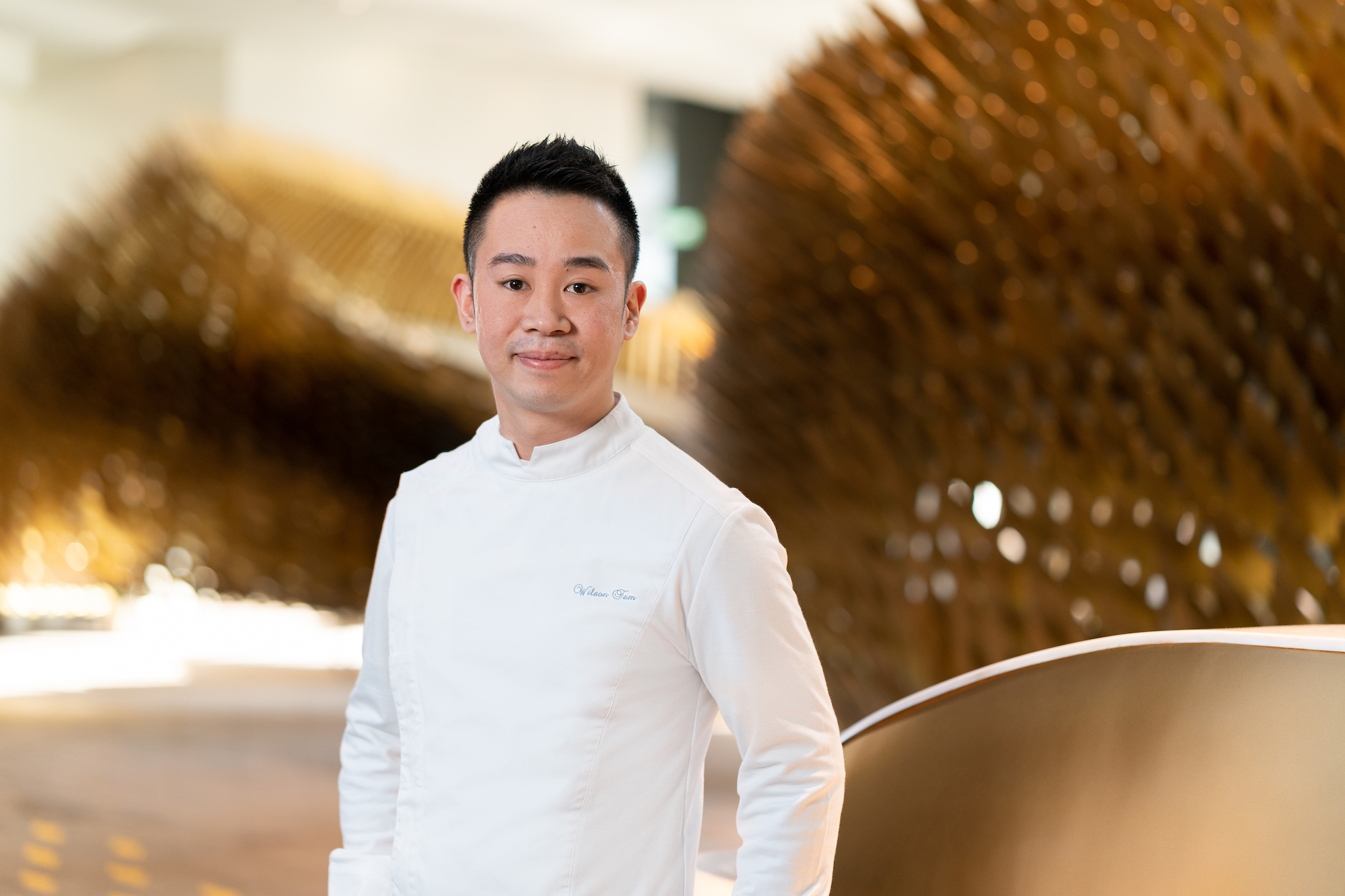
Chef Wilson Fam
Yí Jing, or Book of Changes
To say that Yí provides a unique dining experience would be an understatement as it offers much more than that. The name “Yí” and its culinary concept comes from Yí Jing, internationally known as the Book of Changes, one of the most influential Chinese texts. Among other wisdom of the ancient text is the belief that the way we nourish ourselves is directly related to our wellness and good fortune. Hence, the tasting menu at Yí is crafted in a way to reflect this belief. To align it with 24 solar terms of the traditional Chinese calendar, the chef changes it every month, addressing the ancient Chinese philosophy.
The mastermind behind those creations is the executive chef Wilson Fam. With the help of his highly-skilled cooking team, he provides guests with a wholesome adventure into the Chinese diverse and multidimensional culinary world. Being only 35 years old, he is the youngest chef de cuisine in the Melco team. When one witnesses his exceptional techniques, profound knowledge, and mindblowing presentation skills, there will be no question on how he achieved it at such a young age.
Sommeliers
To complement the exquisite meal, Yí offers the services of tea and wine sommeliers. As soon as we arrived at the table, a refreshing citrusy “yi-ga” tea was served as a welcoming gesture. During the meal, guests are served seasonal tea that pairs most adequately with the menu of the month. We got to enjoy tea infused with jasmine and cranberry. If you are happier when your food comes with wine, ask for wine pairing.
Overture
Yí’s tasting menu that we had a pleasure to try featured a total of ten dishes, amuse bouche and petit fours. We started the sophisticated feast with two amuse bouches–deep-fried honey-roasted Iberico pork puff with apples, fava bean with pumpkin tart in Sichuan spices. These tiny appetizers are usually meant to awaken the palate.

Hairy crab with caviar
Part one
After a promising preamble, a round plate with marbles laid on it arrived. The first dish, Hokkaido hairy crab with Iranian caviar and egg white right away proved that chef Wilson Fam rightfully earned his position. To achieve this exemplary round form of the pearl, the chef cooks egg white in a wok with oil in low heat, stirring gently until the egg white is formed into the right shape. Chef Wilson’s mastery of cooking seafood ingredients is reflected in the next course, seabream. He manages to preserve the immensely delicate flavor and texture of the Japanese fish by applying only a light thermal treatment to it. Then, he compliments it with the salty preserved black bean.
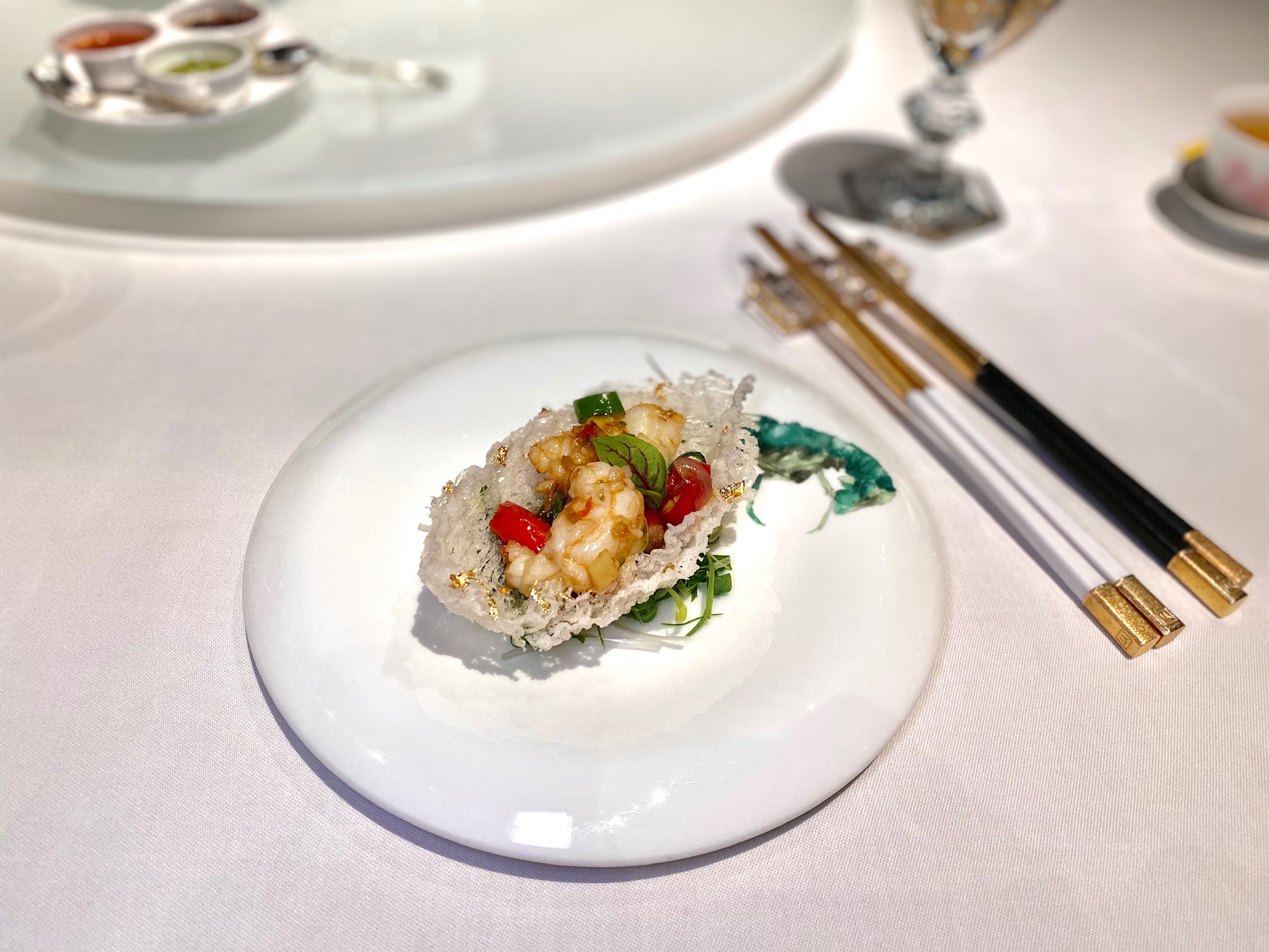
Wok-fried lobster with chili peppers
Another remarkable dish, visually and flavor-wise, is the wok-fried lobster with chili served in a crunchy nest made with fried Vietnamese rice paper. The chosen cooking method works perfectly with an ingredient as fine as the lobster. What makes it even more sophisticated is a rich sauce with preserved black beans, aged mandarin peels, soy sauce, oyster sauce, and Chinese “Hua Diao” or “Shao Xing” wine.
To entertain guests, waiters perform some of the last cooking steps in front of them. For instance, to serve braised South African abalone, a waiter rolls in a table topped with a saucer. They carefully cut abalone in half and transport it to a large shell, pouring brown sauce made of fresh pork ribs, lean pork meat, dried scallops, and elder chicken over it. Overall, Yí’s presentation style deserves a round of applause for its artistic value. Like a beautiful frame for a masterpiece, it honors the ingredients and becomes and adds a creative touch.
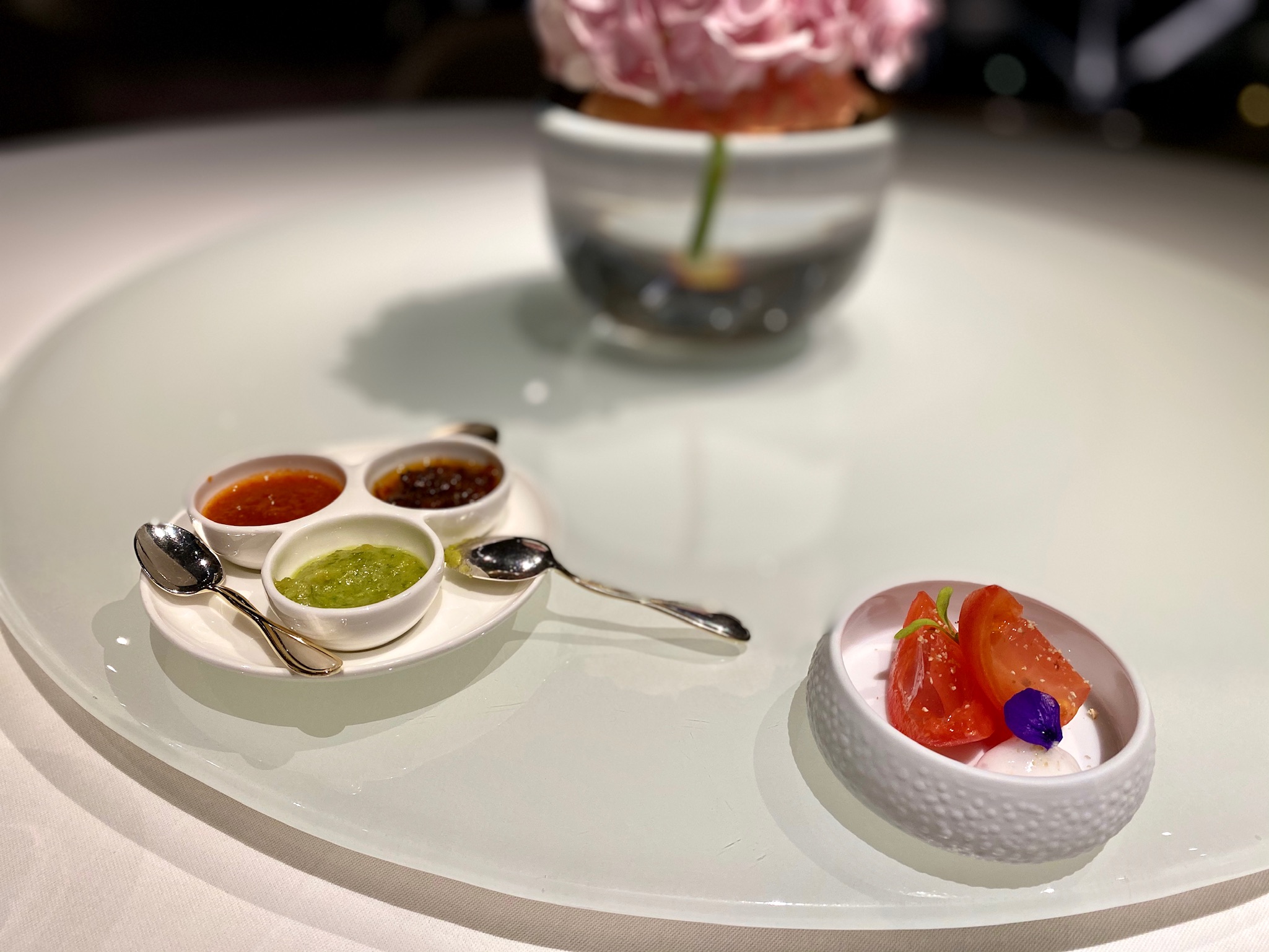
Japanese tomato with transparent tomato jelly
Intermission
To cleanse the palate before the next five dishes, the chef offered us a refreshing Japanese tomato filled with transparent tomato jelly. Made with pure tomato juice, this jelly becomes clear after the chef first separates the liquid from the pulp by straining it, then he places the pulp in a cloth and lets it slowly drip. To enhance the flavor and boost appetite, a bit of preserved plums, mandarin peels, and hawthorns are added. Then, the clear tomato essence is jellified and placed inside a tomato.
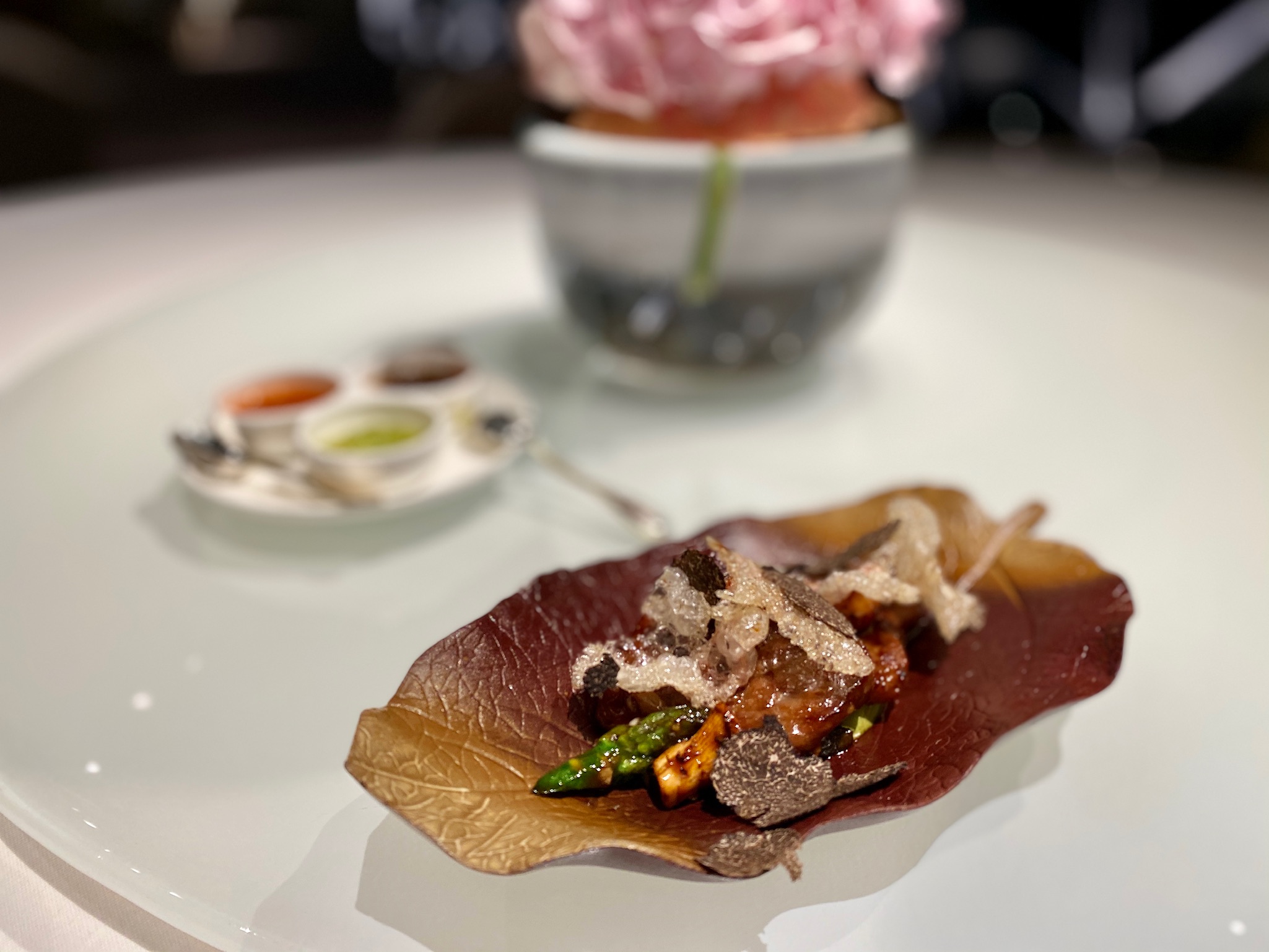
Wok-fried wagyu with truffle
Part two
Our meal continued with a dish that would make meat lovers go crazy. Cooked to perfection, the wagyu beef comes with some mushrooms and crunchy asparagus. But the cherry on top is the Tasmanian black truffle. The waiter paraded a large box full of this subterranean delicacy to our table and shaved some over the meat. What an explosion of rich flavors!
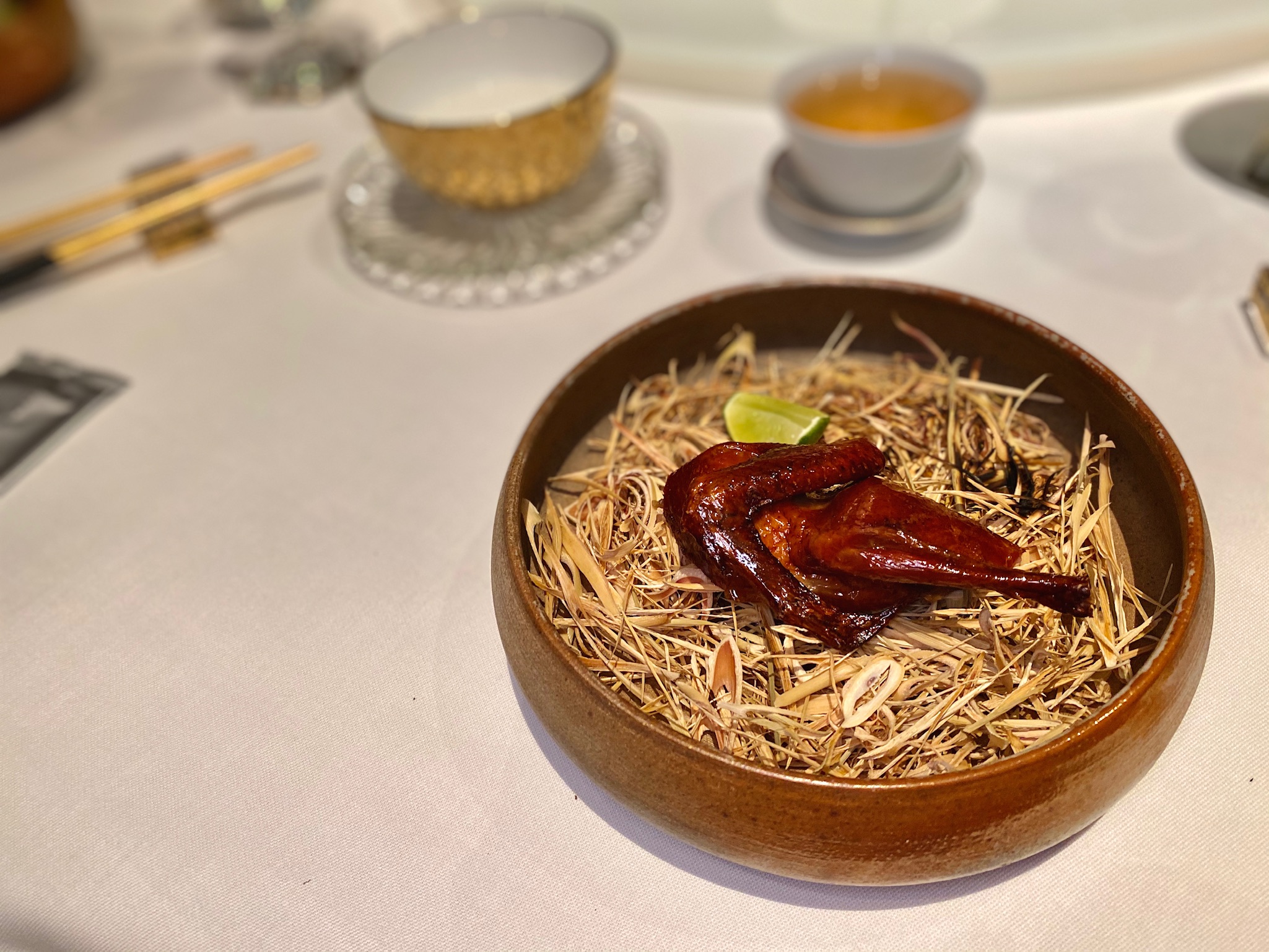
Lemongrass oven-roasted pigeon
Just when we were savoring the last piece of wagyu, one of Yí’s signature courses arrived–lemongrass oven-roasted pigeon. This traditional Cantonese dish is indeed a delectable one thanks to the careful selection of ingredients and precise technique. Yí’s cooking team uses 25-30-day-old baby pigeons from Zhongshan, a renowned source of high-quality pigeons. Thus, pigeon meat is soft and tender. To achieve the crispiness of the skin, the cooks use a Chinese culinary classic technique. Firstly, they clean and marinate the pigeon, then blanch the skin and coat it with special home-made vinegar sauce. The pigeon is then air-dried for six to eight hours and lastly, when the order is placed, the chef deep-fries the bird at the correct temperature. The smoky aroma of lemongrass adds a citrusy touch to the dish.
The last course before dessert was salted rice topped with sea urchin, a luxurious interpretation of the Cantonese home-cooking. That simple addition of the Japanese urchin transforms a bowl of hearty rice with vegetables into a high-end restaurant dish.
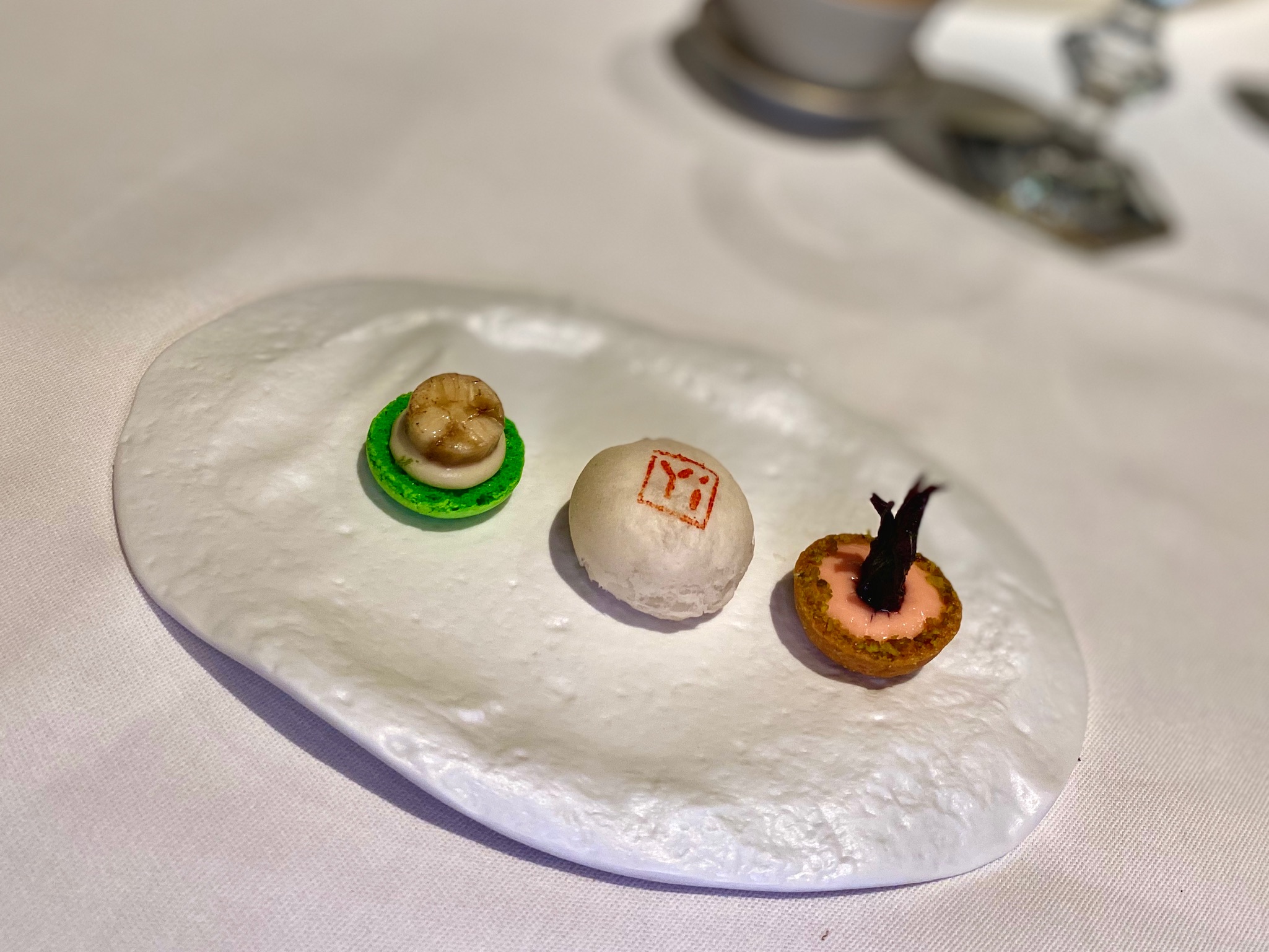
Petite fours
Denouement
To conclude this unforgettable gastronomic event, we had a healthy dessert with gum Tragacanth and aloe, served in a coconut, followed by three delicious petit fours, Rosella custard tart, banana and lime macaron, and oven-baked salted egg puff pastry with sweet lotus paste. At the end of the meal, we had the pleasure to witness a beautiful ceremony with a Memorable Tea served in a stunning phoenix glass. So classy!
Yí Level 21, Morpheus Hotel, City of Dreams, Estrada do Istmo, Cotai, +853 8868 3446, www.cityofdreamsmacau.com/yi
Photo credit: City of Dreams; Ksenia Kuzmina

